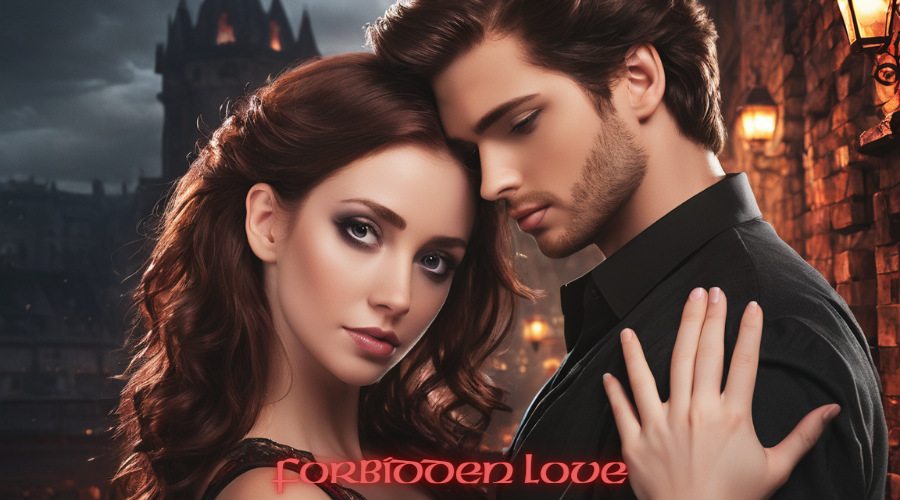Romance fiction writing is a genre that weaves tales of passion, desire, and connection that touch readers across the globe. Behind every captivating romance novel is a writer skilled at his or her craft who is able to weave human emotion into narratives that tug at your heartstrings.
Whether you are a romance fiction fan, an experienced romance writer, or someone just starting in the romance genre, you'll find these tips for writing romance helpful. From creating characters to crafting authentic relationships and navigating complex plots, you'll learn some of the tips that leave readers looking for more.
Understanding the Romance Genre
Romance novels captivate readers with stories of passion, love and, in most cases, happily ever afters. They provide an outlet for you to forget your own problems for a few hours. To master romance writing, you must be able to have a deeper understanding of this genre and its various subgenres.
Romance fiction revolves around one central theme: Love. However, romance fiction has many subgenres – each one having its unique characteristics. Subgenres include:
- Historical
- Contemporary
- Paranormal
- Erotica
- Suspense
- Fantasy
- Young adult
- Inspirational
- Comedy
- Sci-Fi
- Adult
- Gothic
- Vampire
- Western
- Military
- Billionaire
Regardless of the subgenre, a romance novel places emphasis on relationships. It might be a budding relationship, a firey passion, or even a forbidden love affair – no matter what type of relationship your characters have, the dynamics between the characters should drive the narrative forward.
While all of your characters must be strong and relatable, that is especially true for the protagonist. Your readers must be able to fall in love with the character – or at least root for the character.
Another hallmark of romance fiction is that it always has a happy ending. The journey to that ending might have tons of obstacles and challenges, but readers can count on a satisfying resolution where love conquers all.
Romance Conventions and Tropes
When writing romance, you can use certain conventions and tropes with effect. They resonate with readers and provide a comforting sense of familiarity. However, you must be careful that they don't sound like a cliché. Understanding how to implement conventions and tropes is essential for building a compelling and engaging story that resonates with your readers.
The Meet-Cute
This is one of the most iconic romance conventions. With the meet-cute convention, the protagonists first meet in an unconventional way. It might be a chance meeting, a misunderstanding, a fateful collision, or even a humorous encounter. Regardless of how they meet, it should be memorable and should set the stage for the romance to unfold.
Opposites Attract
Another staple of romance fiction is the "opposites attract" trope. Your main characters have contrasting personalities, worldviews or backgrounds, yet they find themselves drawn together. Despite their attraction for each other, there is plenty of tension and conflict as the protagonists navigate their different views to come to an understanding and fall in love.
Forbidden Love
When you want to add drama and intensity to a romance, you can use the "forbidden love" trope. Whether it's a love affair between two different races in historical times, between rival families, a romance that would be against societal norms or even between a boss and an employee, you'll find plenty of consequences and risks in this forbidden love story.
Second Chances
The characters reunite for a second chance at love after they separate or experience a heartbreak. They must confront unresolved issues while working at another opportunity for romance. This trope often explores redemption, forgiveness and healing old wounds with love.
Going From Friends to Lovers
The transitioning from platonic friendship to lovers trope allows characters to navigate the complexities of their feelings for each other as they transition from being friends to being lovers. Romance readers love this trope because of the slow-burn tension and deep emotional connection that develops between friends before they figure out they love each other.
The Happily Ever After
Of course, the most important trope in romance is the "happily ever after," where the protagonists work through their issues to a point where they can live happily for the rest of their lives. This gives readers a sense of satisfaction and fulfillment, which reinforces their belief in the power of love.
These tropes are often the foundation of a great romance novel, but they are not a formula you have to follow, nor are they restrictive. You can put your own unique spin on these tropes, which subverts expectations and gives similar tropes a new life.
The Emotional Core of Your Story
In addition to the subgenres and the conventions and tropes of romance, you also need to look at the emotional core of your story. Romance is about connecting and all the emotions that accompany it, including desire, love, heartbreak, and all the other emotions. When you tap into the universal experiences of love and longing, you can connect deeply with readers and leave a lasting impression.
Crafting Compelling Characters
Without characters, you don't have a story. Your characters bring the highs and lows of love to your readers. They make your readers want more as they see what the character is going to do next. Thus, creating compelling characters is a fundamental aspect of mastering the skill of romance fiction writing. You need attention to detail, depth and authenticity.
The Role of Characters in Your Romance Novel
Your characters are much more than conduits for plot development. These complex individuals have hopes, fears and desires of their own. Their emotional journeys are often the same as your readers' journeys. Well-developed characters are one of the most important parts of your story, as they must resonate with your readers in order to keep them coming back for more.
Key Elements of Compelling Characters
To create a romance story that will hold readers' attention, the characters must be compelling. You must be able to create realistic personalities for each character – and have personalities and emotions that resonate with your readers and ignite their imaginations. Your readers must be able to explore love, desire and human connection.
Depth and Complexity
Your characters should be multifaceted with layers of complexity so they feel real and relatable. They should have strengths, weaknesses, flaws, quirks, and a rich inner life that motivates them. When you dive into your characters' psyches, you create protagonists who feel like human beings capable of eliciting empathy and understanding from your readers.
Backstory and Motivation
Every character has a backstory – a history that informs who they are and why they act the way they do. When you understand your characters' past experiences, traumas and desires, you are able to create fully fleshed-out, three-dimensional individuals who feel authentic. Some of the questions you might ask yourself about your characters include:
- What drives them to look for love?
- What insecurities or fears stand in their way?
- Why do they do some of the things they do?
- Do they have habits that might turn their love interests off?
When you look at these and other questions, you can uncover underlying motivations that move your characters forward and shape their romantic journey.
Relatability and Likeability
Even if your characters are not perfect, they must be likable and relatable, or you won't capture your readers' interest and empathy. Your heroine might be charmingly flawed, or you may have a brooding hero – but the reader must see himself or herself in the character. You can create strong emotional connections when your characters are relatable.
Chemistry and Compatibility
The chemistry between the characters in a romance novel is one of the most important parts of character development. Whether you are creating a slow-burning romance or a fiery, passionate love affair, the attraction between the protagonists is what drives the narrative forward and keeps your readers invested.
Pay close attention to the dynamics between your characters, ensuring their interactions feel authentic. From witty banter to sizzling tension, the chemistry between the characters should jump off the page and leave your readers wanting that "happy ever after."
Growth and Development
Your characters must grow and develop during the course of the story. Whether it's overcoming past traumas, learning to open their hearts to love or confronting their fears, the protagonists should experience a meaningful transformation that resonates with your readers on a deep emotional level. When you create your characters' with this amount of depth, they become emotionally satisfying and cathartic for your readers.
Building Tension and Conflict
In romance fiction, tension and conflict are what make a compelling narrative. It's the friction between the characters, the obstacles they face, and the unresolved desires that keep your readers turning the pages. Mastering the art of building tension and conflict is essential to keep your writers' interest.
Character Conflict
The conflict between the characters is central to any romance story. It might be conflicting goals, a personality clash, or past wounds that haunt your characters. Regardless of what it is, the conflict and tension are what drive the emotional core of the narrative. When you delve into the nuances of your characters, you can create conflicts that feel authentic and compelling.
External Obstacles
Beyond internal conflicts, external obstacles can add layers of complexity to your romance plot. The obstacles can vary from societal norms and family expectations to external threats or physical distance. When you introduce external challenges that test your characters' resolve and commitment to each other, you can increase the tension and keep your readers on the edge of their seats.
Emotional Arcs
To effectively build tension, you need to have a deep understanding of your characters' emotional journeys. The characters must be able to confront their fears, vulnerabilities and insecurities, leading to moments of intense emotional conflict. When you allow your characters to tussle with their inner demons and wrestle with their feelings for each other, you can create a rollercoaster of emotions that keep your readers emotionally invested in the story.
Unresolved Desires
Of course, the heart of every romance is the longing for connection and intimacy. When you tease your characters' desires and keep them just out of reach, you can create tension throughout the narrative. Whether the anticipation of the first kiss, longing for a love that seems impossible, or the fear of rejection, those unresolved desires fuel the emotional tension that drives your story forward.
Pacing and Timing
Effective tension-building requires you to pace and time your story carefully. You must know when to escalate the conflict, introduce new obstacles, and provide moments of respite for the characters and readers. When you master the ebb and flow of tension, you can create a narrative rhythm that keeps your readers engaged through the end of the book.
Mastering Dialogue and Emotional Resonance
The dialogue is the lifeline of a romance narrative as it offers your readers a window into the hearts and minds of the characters. You convey emotion and develop relationships and chemistry between the characters with dialogue.
Authenticity and Voice
Believable characters have authentic dialogue, which also fosters emotional resonance. Each character should have a distinct voice that reflects his or her personality, motivations and background. When you stay true to each character's voice, you can immerse your readers in the world of the story and establish a deep connection with the characters.
Subtext and Unspoken Emotions
Sometimes, the most powerful moments in your story are created with subtext and unspoken emotions. These hidden emotions and unspoken words that linger beneath the surface convey complex emotions and deepen the bond between your characters. Subtle gestures, meaningful glances, and loaded silences can convey more than words ever could and will create moments of emotional resonance that linger long after the dialogue ends.
Conflict and Tension
You can use dialogue to build tension and conflict in romance stories. Heated arguments, passionate debates and simmering disagreements can reveal characters' desires and vulnerabilities to drive the emotional core of the narrative.
You can create moments of high drama and intense emotional resonance when you use dialogue to explore conflicts between characters.
Chemistry and Connection
Dialogue also plays a critical role in establishing the chemistry and connection between romantic partners. Witty banter, intimate exchanges and meaningful conversations show characters deepening their bond and forging a connection that resonates with your readers. When you craft dialogue that sparkles with chemistry and reveals the underlying attraction between the characters, you can captivate your readers and draw them into the romance unfolding on the page.
Emotional Impact
The ultimate goal in romance fiction is to evoke an emotional response from your readers. Whether you get them to swoon with delight, feel that flutter of anticipation, or shed tears of heartbreak, well-crafted dialogue can stir the soul and leave a lasting impression. Dialogue created with genuine emotion and heartfelt sincerity can leave readers wanting more long after they finish the book.
Setting the Scene: Creating Atmospheric Romance Settings
The setting in a romance is more than a backdrop for the unfolding love story – it becomes a character as it shapes the tone, mood and atmosphere of the narrative. Mastering the art of creating an atmospheric setting is crucial for transporting readers into your story and immersing them in the romance unfolding on the pages.
Sensory Detail
To bring a setting to life in romance fiction, it must engage the senses. Sights, sounds, smells, tastes, textures – they all immerse readers into the world of the story and allow them to experience the setting with the characters. It might be anything from the scent of blooming roses, the sound of a waterfall crashing into a serene pool, or a soft breeze on a summer evening – these types of details enrich a reader's experience and create a vivid sense of place.
Emotional Landscape
Make sure the setting reflects the emotional landscape of the romance unfolding in it. Whether you choose a bustling cityscape or a tranquil countryside retreat, the setting sets the mood and tone for the narrative. When you choose a setting that resonates thematically with the emotional journey of the characters, you can enhance the emotional resonance of the story and pull the reader deeper into the connection with the romance.
Symbolism and Metaphor
You can use the setting to enhance the thematic elements of a romance novel symbolically. Using metaphorical meanings, such as a crumbling mansion to represent lost love or a sun-drenched beach to represent a new beginning, you can add layers of complexity and depth to your narrative. Using symbolism can often enrich the story's subtext and allow your readers to interpret the meaning behind the imagery, further engaging them with the text.
Cultural Context
You can shape the setting by using cultural context such as a cozy coffee shop in a small town, a glamorous ballroom in Regency-era England, or a stream deep in the woods; the cultural backdrop of the setting influences the characters' behaviors, interactions and beliefs. When you ground a setting in its cultural context, you can create an immersive world that feels authentic to life, which enriches your readers' experience and enhances the romance narrative.
Dynamic Settings
Over the course of the story, dynamic settings that evolve can add depth and dimension to a romance. Whether the season changes, the weather patterns shift, or time passes, settings that transform mirror the emotional journey of the characters and reflect the growth and development of their relationship. When you integrate dynamic elements into the setting, you can create a sense of momentum and progression that moves the story forward and keeps your readers engaged until the end.
Balancing Sensuality and Emotional Depth
In romance, it is imperative to find the delicate balance between sensuality and emotional depth. Although physical attraction and passion play essential roles in a romance, the emotional connection between the characters forms the bedrock of a compelling love story.
Character Development
If you want to infuse a romance with emotional depth, you must build complex, multidimensional characters. You can do this by delving into their pasts, motivations and vulnerabilities. As the romance unfolds, readers should see character growth, transformation and a deepening connection, all of which allows the reader to become emotionally invested in the outcome of the relationship.
Sensual Tension
The spark that ignites the romance narrative is sensual tension. It fuels the chemistry between the characters and drives the physical attraction that simmers on the surface. Lingering touches, charged glances, and sizzling chemistry can create intense sensuality that leaves your readers anticipating the next encounter. When you weave sensual tension throughout the narrative, you heighten the emotional stakes that keep your readers engaged.
Emotional Intimacy
While sensuality draws the reader in, emotional intimacy keeps the reader invested in the romance narrative. True emotional depth is revealed through moments of vulnerability, trust and honesty between characters. When you allow your characters to open up to each other by sharing their fears and insecurities and supporting each other through challenges, you can deepen the emotional connection between them and create a love story that resonates on a profound level.
Dialogue and Communication
We've already learned that dialogue plays a crucial role in bringing authenticity to a romance novel. It also plays a crucial role in balancing emotional depth and sensuality. Characters can express their desires, articulate feelings and forge a deeper understanding of each other through dialogue. When you leverage dialogue to explore the emotional landscape of your characters' relationship, you can create moments of intimacy and vulnerability that resonate with your readers, which deepens their emotional investment in the story.
Editing and Revising Your Romance Manuscript
Once you have completed the initial draft of your manuscript, the real work begins: Editing and revising. It is at this step that you refine your story and polish your narrative and dialogue to tune your novel to captivate readers. Before you dive into the editing process, take a break from the manuscript. When you work on it with fresh eyes, it is easier to find areas that need improvement.
Evaluate and Structure the Pacing
The first step of the editing process should be evaluating the overall structure and pacing of your novel. Make sure the plot unfolds logically and that each scene and chapter moves the story forward and deepens the characters' arcs. Watch the pacing and trim unnecessary scenes or passages that tend to slow the narrative momentum. Tighten the pacing of pivotal moments to maintain tension and engagement.
Refine Characterization
Since the characters are the heart of every romance novel, they must be fully developed and engaging. Revisit your characters' motivations, conflicts and desires to ensure they drive the plot forward and grow throughout the story. Look for inconsistencies and contradictions in their behavior and dialogue.
Crafting Engaging Dialogue
Pay close attention to the dialogue. It is a powerful way to advance the plot, reveal character and build tension. Make sure the dialogue sounds natural and serves a purpose in advancing the story or deepening the characters' relationships. Watch for opportunities to infuse dialogue with emotion and subtext to create moments of intimacy and conflict that resonate with your readers.
Polish Prose and Language
Refine your prose and language during the editing process. You want to aim for clarity, precision and elegance in your writing. Make sure sentence structure, word choice and grammar are correct. Eliminate unnecessary words that detract from your manuscript's readability. Also, consider the tone and voice of your narrative, ensuring that it aligns with the mood and atmosphere of your novel.
Seek Feedback
Once you completed the initial round of editing, ask beta readers to give you feedback. Critique partners and professional editors can also give you feedback. Their fresh perspectives can help you identify blind spots, inconsistencies, and other areas that need improvement in your manuscript. Always be open to constructive criticism and be willing to make revisions based on the feedback you receive – ultimately, this will strengthen your novel and enhance its appeal to readers.
Final Polishing
After making revisions based on others' suggestions, it's time for the final polish. Proofread your novel carefully to find any remaining errors and typos. Once you have read it the last time and made any additional corrections, your novel is ready for publication.
Embracing the Language of Love in Your Writing Journey
Writing romance is a journey of exploration, connection and creativity. You delve into the depths of human emotion and celebrate the complexities of relationships. You also capture the essence of love in all its forms. You have the opportunity to create stories that uplift spirits, inspire change and touch hearts. Whether your romance is a slow-burner or fast-moving passion, the language of love can bring the magic of romance to many readers.
Ultimately, writing romance takes skill, passion and a deep understanding of what makes love stories compelling. Experimenting with different tropes and subgenres and infusing your story with authentic emotion allows you to create novels that will capture the hearts of many readers.











Comments